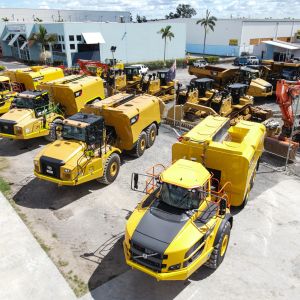The position paper has adopted the Australian Standards AS4772 requirement that the hitch must have a separate “Mechanical and Positive device engaged automatically as part of the attachment engagement process” – most commonly a spring that positions the locking mechanism.
This point is frequently misinterpreted that a spring retains the attachment to the hitch. They don’t, and all Automatic hitches have at least one spring in their design.
Whilst the above considerations are reasonably clear, it opens up a number of issues and considerations when selecting a suitable Quick Hitch for your machine. Some clarifications of current and future requirements are:
Swinging Attachments – the position paper states that the rules will likely change in the next year or two to prevent swinging attachments. So you do not have to change your new hitch again very soon, make sure your hitch has a Dual Lock that fully encloses BOTH front and rear pin .
Detach sequence – “Prevent unintended activation of controls used to disengage the hitch” – the quick coupler should not be able to release the attachment inadvertently in any position by flicking a switch in the cab. The hitch should only be able to release the attachment consciously in a safe position, for instance fully crowded in or using a determined sequence.
Fail to Safe – in the event that the machine stops or is off, the hitch should automatically (without hydraulic assistance) return to the locked safe position, irrespective of the starting position of the hitch. For instance, if the safety system relies on a bar or pin being in a particular position, the hitch loses its safety system possibly when it is needed most.
Variation in pin centres – the quick hitch design should accommodate variation in pin centres within the machines capacity range. This means that the hitch should not solely close around the pins, but that any latching mechanisms or pin insertion designs must ensure ALL attachment pin centres are locked into place. The latching mechanism must also remain locked and active in all positions.
Failure Indication – Does the quick hitch provide an indication to the machine operator that a failure of the hydraulic system for the hitch has taken place and the attachment is only secured by the secondary safety system?




